Gunter Van Craen - CDIO at Bekaert - Embracing Digital Transformation
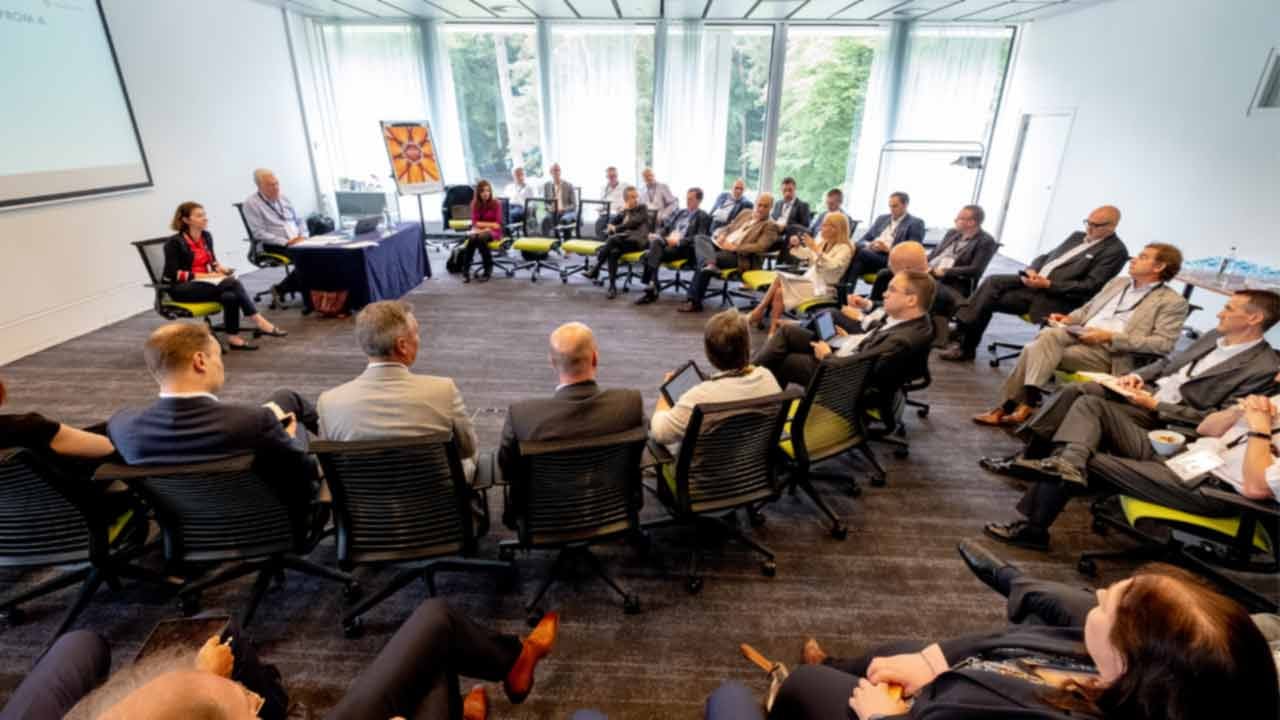
Find out more:
.png)
Poland 5-12-25 Invitation Only Physical Polish
Liderzy biznesowi pokładają ogromne nadzieje w agentach AI, widząc w nich szansę na zbudowanie przewagi konkurencyjnej. Rzadko jednak pada zasadnicze pytanie: czy cyfrowy fundament organizacji – dane, integracje, systemy – jest na to gotowy? Czy obecna strategia integracji wspiera ambicje biznesowe, czy je spowalnia? Podczas naszego biznesowego śniadania CIONET, organizowanego we współpracy z Digia (Finlandia) i Savangard, przyjrzymy się trendom, które dziś definiują architekturę i integracje w Europie i w Polsce. W gronie ok. 20 liderów IT porozmawiamy m.in. o tym: Czy strategia integracji danych i aplikacji powinna uwzględniać przyszłe zastosowania AI? Jak przekształcić kluczowe dane w powtarzalne „data products”, które przyspieszają dostarczanie wartości biznesowej? W jakim kierunku ewoluują platformy integracyjne – iPaaS i API Management? Cloudification - jakie lekcje wynoszą firmy, które przeszły takie transformacje z legacy do nowoczesnej integracji w chmurze? Jak zorganizować „integration core team”, który wzmacnia rozproszone i coraz bardziej niezależne zespoły technologiczne? Spotkanie odbędzie się w kameralnej atmosferze Centrum Praskiego Koneser (CHPTR) i będzie prowadzone w formule dyskusyjnej – z myślą o praktykach zajmujących się modernizacją architektury, integracją systemów i przygotowaniem IT na kolejne lata.
Read More.png)
Poland 8-12-25 Invitation Only Physical Polish
W wielu firmach monitoring wydaje się działać poprawnie, dopóki nie spojrzymy na to, czego nie widać: luki między narzędziami, brak wspólnego obrazu usług, opóźnienia między zdarzeniem a decyzją. W takiej sytuacji trudno wcześnie wykryć degradację, oszacować wpływ incydentów na klientów czy przewidzieć ryzyka, które uderzają w biznes, zanim IT zdąży zareagować. Podczas CIONET Executive Roundtable, którego partnerem jest Spluk, porozmawiamy o tym, ile organizacje tracą na rozproszonym monitoringu i jak wiele można zyskać, gdy staje się on spójnym systemem, a nie zbiorem narzędzi. Zastanowimy się, jak połączyć dane z aplikacji, infrastruktury i biznesu w jeden obraz, który realnie wspiera szybkość reakcji, stabilność usług i jakość decyzji.
Read More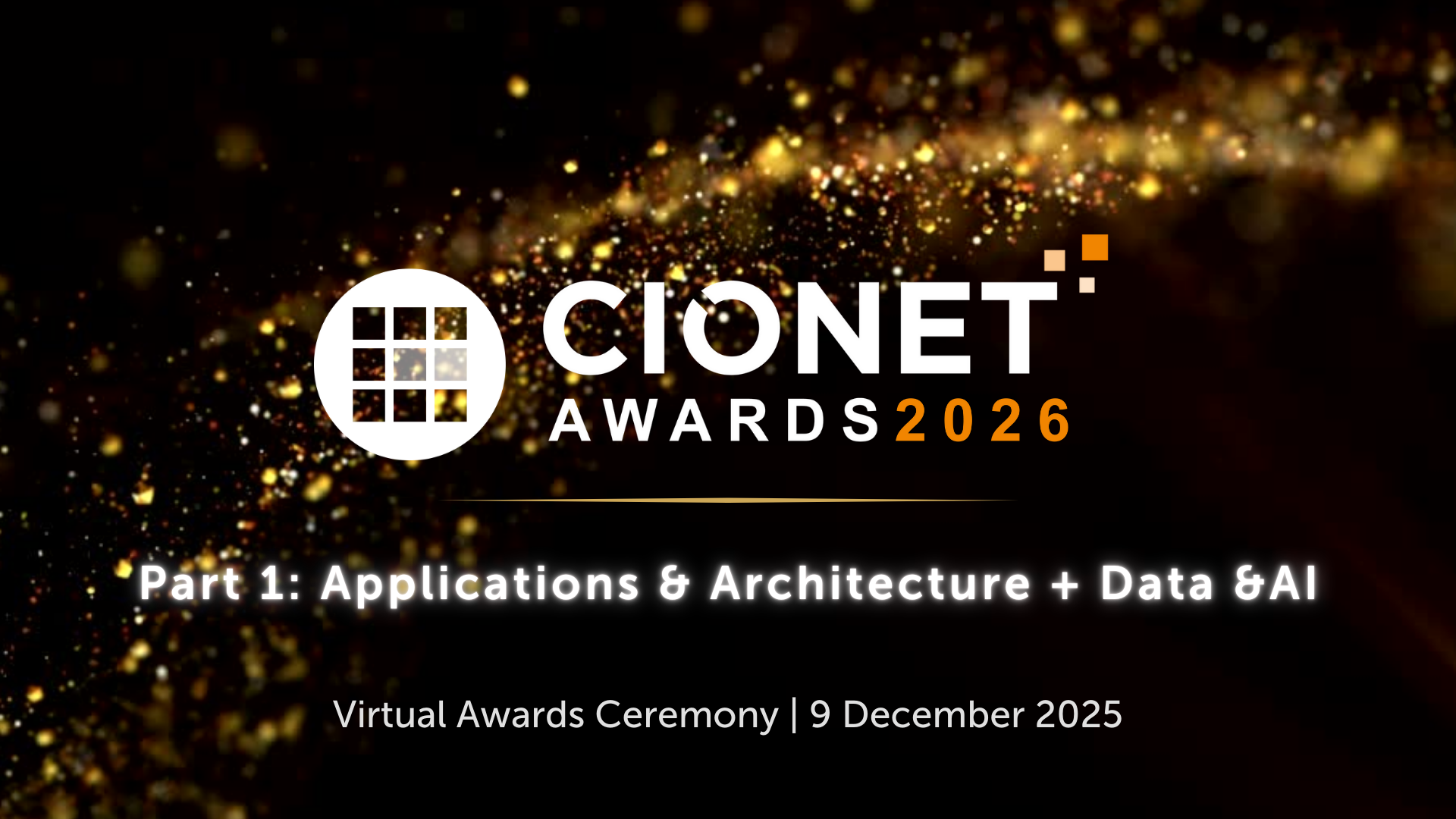
International 9-12-25 Public Virtual english
The CIONET Awards 2026: Part 1, the premier celebration of excellence in digital mission and leadership. During this event the spotlight falls on two of the most critical arenas in modern enterprise: Applications & Architecture and Data & AI. Prepare for a dynamic session where each nominee will present their groundbreaking achievements.
Read More.png)
Brazil 9-12-25 Country Members Physical portuguese
Cerimônia de Premiação CIONET BRASIL 2025.Reconheceremos as Empresas Líderes em Excelência Tecnológica em Projetos e os Líderes Digitais do Ano 2025.Quando?09 de Dezembro de 2025A partir das 18:30Onde?Sheraton São Paulo WTC HotelInscrições online: https://www.cionet.com/pt-br/events/pr%C3%AAmios-cionet-brasil-2025
Read More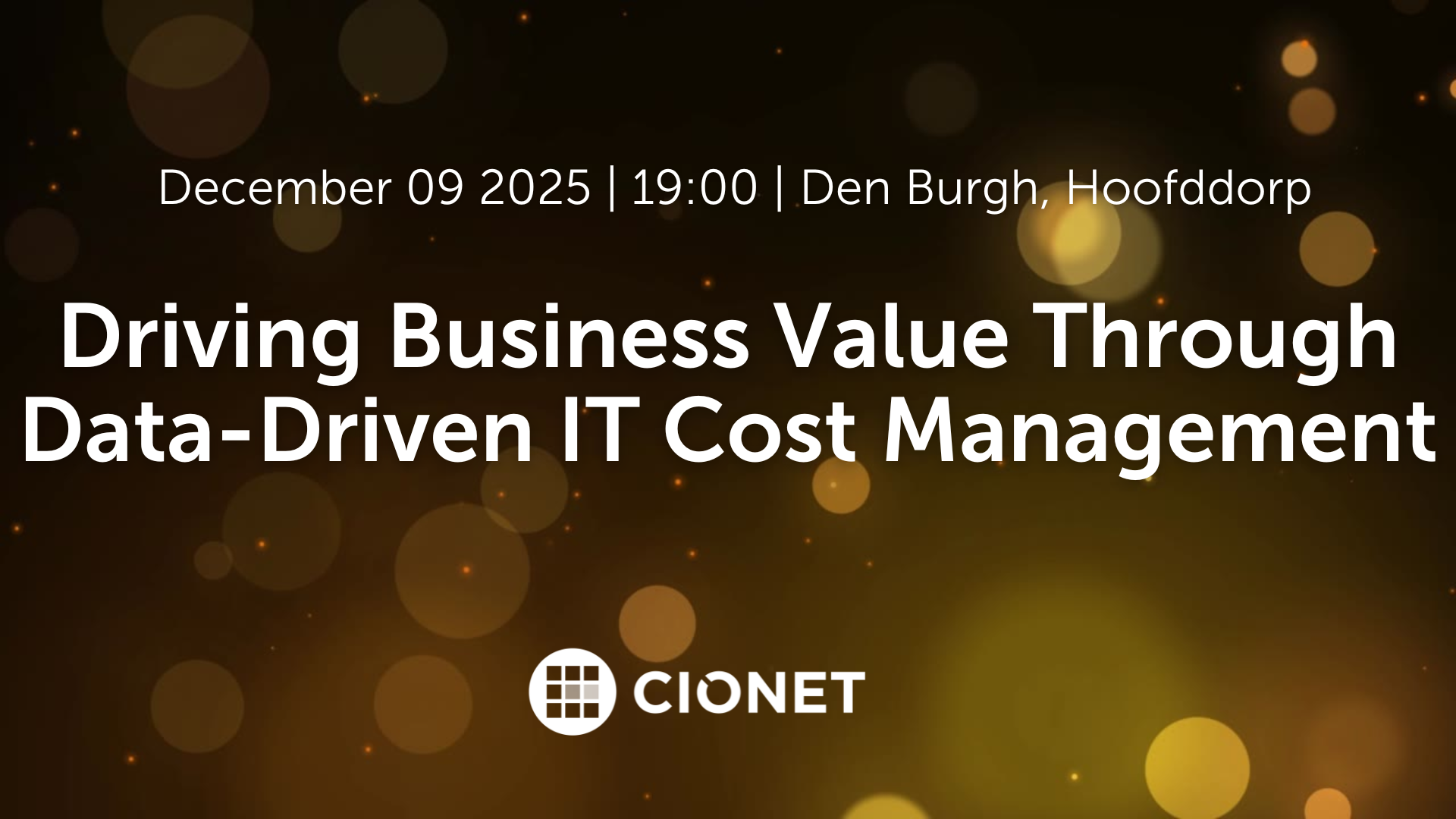
Netherlands 9-12-25 Invitation Only english
At this exclusive CIONET Executive Roundtable, hosted in partnership with It’s Value, we will explore how Technology Business Management (TBM) principles can help CIOs and IT leaders make data-driven financial decisions that drive measurable business value.
Read MoreNetherlands 9-12-25 Invitation Only Physical english
Digital transformation and ongoing economic uncertainty are intensifying the pressure on IT leaders to do more with less. In this environment, gaining precise control over IT costs—while continuing to deliver effective, efficient, and innovative technology operations—is more critical than ever. At this exclusive CIONET Executive Roundtable, hosted in partnership with It’s Value, we will explore how Technology Business Management (TBM) principles can help CIOs and IT leaders make data-driven financial decisions that drive measurable business value. Key Discussion Themes Turning data insights into smarter IT investment decisions Setting priorities for cost optimisation and maximising ROI Quantifying and communicating the business value of IT initiatives Evaluating the principles of FinOps and the implications of public, private, and hybrid cloud environments for cost management Embedding effective change management to drive adoption and alignment Achieving tangible business outcomes from AI initiatives while maintaining fiscal discipline The evening will also feature a fireside chat with Sunil Anand, Global Head of Technology Business Management at National Grid. Sunil will share practical lessons and key milestones, retracing the National Grid cost management journey. This dinner offers a unique opportunity to: Exchange experiences with peers facing similar challenges Gain insights from TBM experts and industry practitioners Reassess your own IT financial strategy in a relaxed, collegial setting Join us for an evening of insight, discussion, and connection—designed to help you strengthen IT’s role as a true business value driver.
Read More.jpg)
Belgium Dec 4, 2025 Invitation Only Physical english
CIONET is committed to highlighting and celebrating female role models in IT, Tech & Digital, creating a leadership programme that empowers and elevates women within the tech industry. This initiative is dedicated to showcasing the achievements and successes of leading women, fostering an environment where female role models are recognised, and their contributions can ignite progress and inspire the next generation of women in IT.
Read More.png)
International Dec 9, 2025 Public Virtual english
The CIONET Awards 2026: Part 1, the premier celebration of excellence in digital mission and leadership. During this event the spotlight falls on two of the most critical arenas in modern enterprise: Applications & Architecture and Data & AI. Prepare for a dynamic session where each nominee will present their groundbreaking achievements.
Read More
Netherlands Dec 9, 2025 Invitation Only Physical english
Digital transformation and ongoing economic uncertainty are intensifying the pressure on IT leaders to do more with less. In this environment, gaining precise control over IT costs—while continuing to deliver effective, efficient, and innovative technology operations—is more critical than ever. At this exclusive CIONET Executive Roundtable, hosted in partnership with It’s Value, we will explore how Technology Business Management (TBM) principles can help CIOs and IT leaders make data-driven financial decisions that drive measurable business value. Key Discussion Themes Turning data insights into smarter IT investment decisions Setting priorities for cost optimisation and maximising ROI Quantifying and communicating the business value of IT initiatives Evaluating the principles of FinOps and the implications of public, private, and hybrid cloud environments for cost management Embedding effective change management to drive adoption and alignment Achieving tangible business outcomes from AI initiatives while maintaining fiscal discipline The evening will also feature a fireside chat with Sunil Anand, Global Head of Technology Business Management at National Grid. Sunil will share practical lessons and key milestones, retracing the National Grid cost management journey. This dinner offers a unique opportunity to: Exchange experiences with peers facing similar challenges Gain insights from TBM experts and industry practitioners Reassess your own IT financial strategy in a relaxed, collegial setting Join us for an evening of insight, discussion, and connection—designed to help you strengthen IT’s role as a true business value driver.
Read More.jpg)
Italy Dec 10, 2025 Invitation Only Physical italian
Questa roundtable esclusiva offrirà a CIO, CISO e Leader di ITOps/Engineering un confronto diretto per individuare le migliori strategie di Innovazione che, attraverso l'observability, ottimizzino il Return of Investment.
Read More.jpg)
Belgium Dec 11, 2025 Country Members Physical english
Imagine being able to monitor, simulate, and optimise an entire city, factory, or supply chain in real time. Next-generation digital twins are making this vision a reality, transforming how we manage and understand complex systems. By creating dynamic virtual replicas of physical assets and processes, digital twins allow organisations to predict issues, optimize performance, and make data-driven decisions with unprecedented accuracy.This event will explore how digital twins are being used across industries to revolutionize the way we operate and maintain large-scale, intricate systems—whether it’s the infrastructure of a smart city, the efficiency of a factory floor, or the resilience of global supply chains.Examples of Digital Twins in Action:Smart Cities: Urban planners can use digital twins to simulate traffic flow, monitor energy usage, or predict the impact of weather events on infrastructure. This enables cities to optimize resources and improve the quality of life for their citizens.Factories of the Future: Manufacturing plants are leveraging digital twins to monitor equipment in real time, prevent downtime, and optimize production lines. With predictive analytics, factories can avoid costly breakdowns and improve overall efficiency.Supply Chain Management: Complex supply chains, spanning continents and industries, can be modeled as digital twins to track shipments, simulate disruptions, and optimize logistics. Businesses can reduce inefficiencies and respond faster to market demands.Key Themes:Real-Time Monitoring and Simulation: How digital twins provide real-time insights into complex systems, allowing for dynamic response and optimization.Predictive Power: Leveraging AI and data analytics, digital twins help organisations predict and mitigate issues before they happen, from equipment failures to supply chain bottlenecks.Scalability Across Ecosystems: Digital twins aren’t limited to individual assets—learn how they can be scaled across entire ecosystems like smart cities or global supply chains for maximum impact.Building Trust and Security: With digital twins handling critical infrastructure and sensitive data, what are the security and governance frameworks needed to ensure trust in these virtual systems?Why You Should Attend:Next-generation digital twins are no longer just a concept—they are revolutionizing industries by offering a new way to manage complexity. Whether you’re looking to optimize a city, factory, or supply chain, this event will provide practical insights into how digital twins can transform your organisation’s operations and drive future innovation.
Read More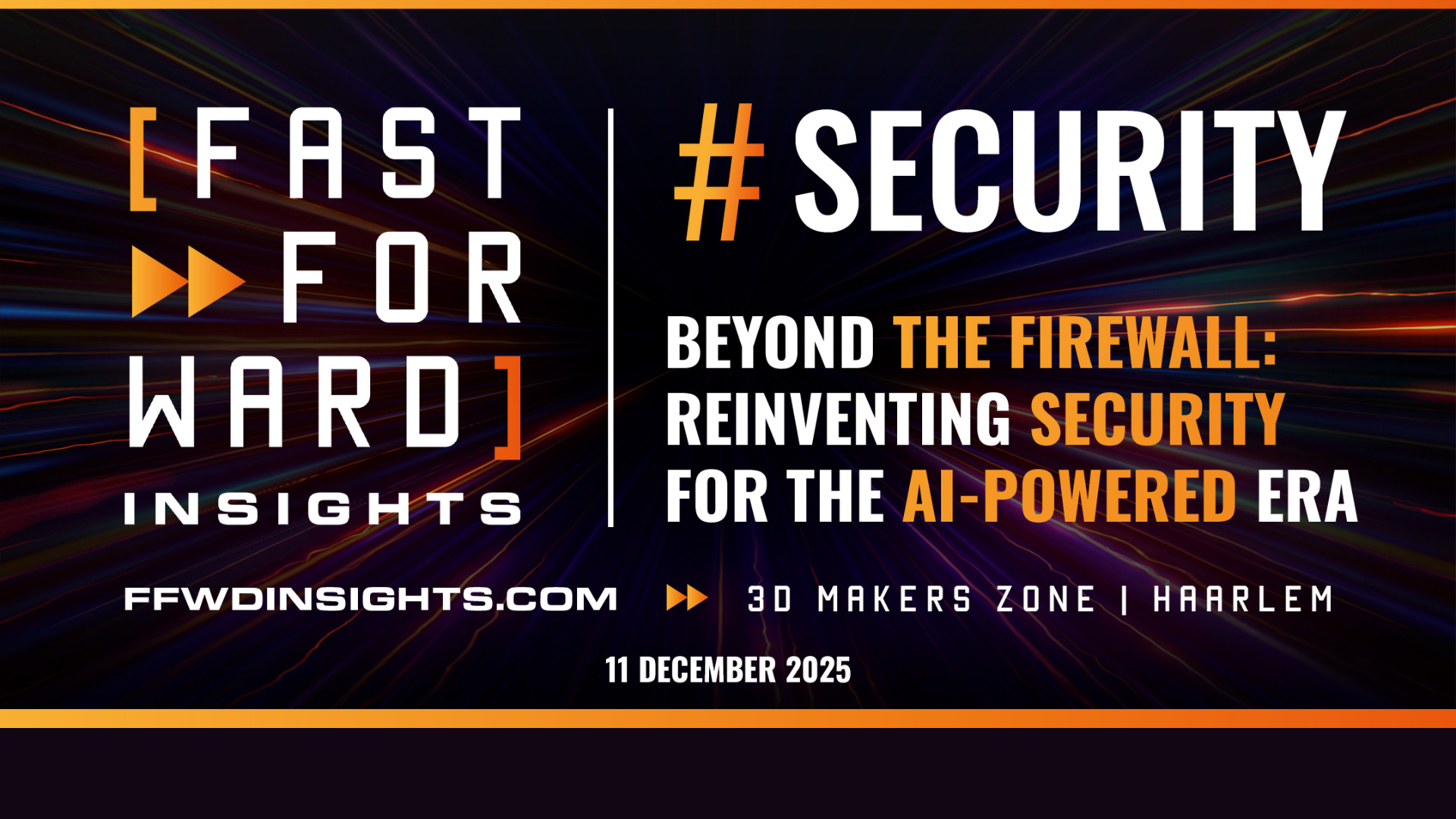
Netherlands Dec 11, 2025 Invitation Only Physical dutch
Navigating tommorrow's threatscape: Cybersecurity insights for digital leaders. Op 28 november in de 3D Makers Zone in Haarlem.
Read More.jpg)
Belgium Dec 4, 2025 Invitation Only Physical english
CIONET is committed to highlighting and celebrating female role models in IT, Tech & Digital, creating a leadership programme that empowers and elevates women within the tech industry. This initiative is dedicated to showcasing the achievements and successes of leading women, fostering an environment where female role models are recognised, and their contributions can ignite progress and inspire the next generation of women in IT.
Read More.png)
International Dec 9, 2025 Public Virtual english
The CIONET Awards 2026: Part 1, the premier celebration of excellence in digital mission and leadership. During this event the spotlight falls on two of the most critical arenas in modern enterprise: Applications & Architecture and Data & AI. Prepare for a dynamic session where each nominee will present their groundbreaking achievements.
Read More
Netherlands Dec 9, 2025 Invitation Only Physical english
Digital transformation and ongoing economic uncertainty are intensifying the pressure on IT leaders to do more with less. In this environment, gaining precise control over IT costs—while continuing to deliver effective, efficient, and innovative technology operations—is more critical than ever. At this exclusive CIONET Executive Roundtable, hosted in partnership with It’s Value, we will explore how Technology Business Management (TBM) principles can help CIOs and IT leaders make data-driven financial decisions that drive measurable business value. Key Discussion Themes Turning data insights into smarter IT investment decisions Setting priorities for cost optimisation and maximising ROI Quantifying and communicating the business value of IT initiatives Evaluating the principles of FinOps and the implications of public, private, and hybrid cloud environments for cost management Embedding effective change management to drive adoption and alignment Achieving tangible business outcomes from AI initiatives while maintaining fiscal discipline The evening will also feature a fireside chat with Sunil Anand, Global Head of Technology Business Management at National Grid. Sunil will share practical lessons and key milestones, retracing the National Grid cost management journey. This dinner offers a unique opportunity to: Exchange experiences with peers facing similar challenges Gain insights from TBM experts and industry practitioners Reassess your own IT financial strategy in a relaxed, collegial setting Join us for an evening of insight, discussion, and connection—designed to help you strengthen IT’s role as a true business value driver.
Read More.jpg)
Italy Dec 10, 2025 Invitation Only Physical italian
Questa roundtable esclusiva offrirà a CIO, CISO e Leader di ITOps/Engineering un confronto diretto per individuare le migliori strategie di Innovazione che, attraverso l'observability, ottimizzino il Return of Investment.
Read More.jpg)
Belgium Dec 11, 2025 Country Members Physical english
Imagine being able to monitor, simulate, and optimise an entire city, factory, or supply chain in real time. Next-generation digital twins are making this vision a reality, transforming how we manage and understand complex systems. By creating dynamic virtual replicas of physical assets and processes, digital twins allow organisations to predict issues, optimize performance, and make data-driven decisions with unprecedented accuracy.This event will explore how digital twins are being used across industries to revolutionize the way we operate and maintain large-scale, intricate systems—whether it’s the infrastructure of a smart city, the efficiency of a factory floor, or the resilience of global supply chains.Examples of Digital Twins in Action:Smart Cities: Urban planners can use digital twins to simulate traffic flow, monitor energy usage, or predict the impact of weather events on infrastructure. This enables cities to optimize resources and improve the quality of life for their citizens.Factories of the Future: Manufacturing plants are leveraging digital twins to monitor equipment in real time, prevent downtime, and optimize production lines. With predictive analytics, factories can avoid costly breakdowns and improve overall efficiency.Supply Chain Management: Complex supply chains, spanning continents and industries, can be modeled as digital twins to track shipments, simulate disruptions, and optimize logistics. Businesses can reduce inefficiencies and respond faster to market demands.Key Themes:Real-Time Monitoring and Simulation: How digital twins provide real-time insights into complex systems, allowing for dynamic response and optimization.Predictive Power: Leveraging AI and data analytics, digital twins help organisations predict and mitigate issues before they happen, from equipment failures to supply chain bottlenecks.Scalability Across Ecosystems: Digital twins aren’t limited to individual assets—learn how they can be scaled across entire ecosystems like smart cities or global supply chains for maximum impact.Building Trust and Security: With digital twins handling critical infrastructure and sensitive data, what are the security and governance frameworks needed to ensure trust in these virtual systems?Why You Should Attend:Next-generation digital twins are no longer just a concept—they are revolutionizing industries by offering a new way to manage complexity. Whether you’re looking to optimize a city, factory, or supply chain, this event will provide practical insights into how digital twins can transform your organisation’s operations and drive future innovation.
Read More
Netherlands Dec 11, 2025 Invitation Only Physical dutch
Navigating tommorrow's threatscape: Cybersecurity insights for digital leaders. Op 28 november in de 3D Makers Zone in Haarlem.
Read MoreLiantis scales out HR affairs applications using Azure Spring Apps
As a provider of HR tools for entrepreneurs, Liantis operates an expanding network of branch offices across Belgium. Liantis turned to Azure in a digital transformation that will ultimately affect hundreds of Java apps. Azure not only helps lower the total cost of ownership for Liantis but also helps IT teams deliver new features to market faster.unpredictable loads.
Azure Spring Apps was a strategic fit for Liantis because we can really focus on building the application, whereas Microsoft provides and secures the application platform. That’s why Azure Spring Apps is a great fit.Kurt Roggen: Infrastructure and Security Architect - Liantis
For almost 100 years, Liantis has offered support to anyone who owns an enterprise and employs people. Headquartered in Bruges, Belgium, Liantis provides the HR systems that self-employed entrepreneurs and employers use for everything from recruitment to retirement. Three companies—and their IT management systems—merged to form Liantis in 2018, which supports payroll, benefits, insurance, and many more for its clients. More than 100 software developers and other teams update apps frequently in response to ever-changing government regulations, pension guidance, and tax laws.
“As Liantis has gone through a digital transformation, more and more of our portfolio features digital products delivered through our flagship portal, My Liantis,” notes Kurt Roggen, Liantis Infrastructure and Security Architect.
A few years ago, the company upgraded its IT platforms on-premises to meet the growing customer demand. The move helped the company stay flexible even during the COVID-19 pandemic, when so many Liantis customers needed help all at once. However, the company’s on-premises datacenter began to meet its capacity limits during peak usage, such as end-of-month payroll time and during annual accounting submissions.
“Infrastructure shouldn’t be a bottleneck,” Roggen observes. “Liantis has a cloud-first strategy.” That means during the creation of the business case, we compare the benefits of on-premises, infrastructure as a service (IaaS), platform as a service (PaaS), and software as a service (SaaS). “We apply these cloud models to unburden our IT teams, meaning they don't need to worry about all the infrastructure. We want to go for the PaaS or SaaS solution rather than traditional virtual machines and IaaS.”
Roggen calls Liantis IT a “software factory” where the development teams are focused on delivering great digital experiences and value to customers. But the developers were building new products and apps faster than the on-premises infrastructure could support them. It was time for a new approach.
“We wanted to spend less time keeping base infrastructure, including virtual machines and containers, in the air,” Roggen recalls, “and more time delivering and adding value for our customers.”
The flagship My Liantis portal provides access to the Liantis portfolio.
With hundreds of Java services at stake, Liantis began a careful evaluation process. Every solution had to meet the company’s high standards for security, manageability, cost, and performance. IT teams use the popular Java Spring Framework with the Spring Boot technology to simplify the development of microservices-based applications, so Liantis looked at several Azure options, including Azure Kubernetes Service (AKS) and Azure Red Hat OpenShift.
“We tend to always start from the right in our evaluation process—meaning the right side of the as-a-service spectrum where we have SaaS,” Roggen explains. “The more we can delegate to someone who makes infrastructure and platform services its core business, the better. That's how we look at things.”
Around this time, Microsoft announced a partnership with VMware to create Azure Spring Apps, a platform that makes it simpler to deploy and operate Spring Cloud applications. The platform abstracts away the complexity of managing infrastructure and Spring Cloud middleware.
After thoroughly evaluating security, manageability, cost, performance, and other key criteria across the various services, Liantis chose Azure Spring Apps.
“Azure Spring Apps was a strategic fit for Liantis because we can really focus on building the application, whereas Microsoft provides and secures the application platform. That’s why Azure Spring Apps is a great fit,” Roggen concludes.
Liantis was an early adopter of Azure Spring Apps and provided input to the Microsoft product team during the service’s preview period. According to Roggen, the transition was very straightforward. The Java developers can focus on building their business logic while Azure takes care of dynamic scaling, security patches, compliance standards, and high availability.
We believe Azure Spring Apps will help us deliver value faster for our customers and lower our total cost of ownership.Nicolas Van Kerschaver: Chief Information Officer - Liantis
For the past few years, Liantis has approached application development using event-driven and microservices-based architectures. “Our huge, monolithic HR payroll engine is being sliced into many, many microservices. And this is where Azure Spring Apps also fits in,” Roggen explains. Azure Spring Apps is at the center of an architectural approach that Liantis can stamp out consistently for all its workloads.
Most of the Liantis applications consist of multiple Spring Boot services plus an Angular front end. They require both synchronous and asynchronous connectivity to services and legacy systems on-premises, and the architecture is representative of other Liantis apps.
Liantis exposes its web apps through the flagship My Liantis portal. Customers have secure access through an easy, single sign-on experience provided by Spring integration with the ForgeRock identity provider and Azure Active Directory. “It was key that we were able to integrate with ForgeRock for our business applications and customer-facing applications,” Roggen reports. “In the end, it was a straightforward integration with Azure Spring Apps.”
Customer requests are sent through Azure Application Gateway, a web traffic load balancer and web application firewall, which routes requests to the back-end Spring Boot services running in Azure Spring Apps.
For access to services and systems on-premises, Liantis takes advantage of the virtual network (VNet) injection feature in Azure Spring Apps. Apps and the service runtime on the Liantis network are isolated from the internet, but VNet injection enables them to interact with systems on-premises and with Azure services in other virtual networks.
“VNet integration was one of our crucial security decisions—to only expose services through another mechanism,” Roggen explains. “In our case, it’s Azure Application Gateway, which exposes the services sitting behind it.”
A hub-spoke virtual network topology also helps add security through workload segmentation. The hub virtual network acts as the central point of connectivity for the spoke virtual networks, where the apps run. Low-latency virtual network peering connects the spokes to the hub. For added security, Liantis also enabled private endpoints for Azure services, which use a private IP address for the network interface.
Structured data associated with the apps is stored in Azure SQL Database, the highly scalable service that has become a Liantis standard. Because it’s only exposed through private endpoints, Roggen says it matches the VNet integration strategy and enables the applications to talk to the back-end databases securely without the public exposure typically associated with PaaS.
Azure Key Vault safeguards keys, passwords, and other secrets used for authentication, allowing secrets to be injected directly into applications through Spring. “Compared to our previous platform, management of secrets and keys is so much easier with Azure Key Vault,” Roggen reports.
External and internal communications are secured using TLS/SSL. “We were very happy to see that Azure Spring Apps—in a very simple, straightforward way—allows us to secure communications end to end, from the applications over the gateway servers, using Key Vault to insert certificates,” he adds.
Automation and end-to-end monitoring are also essential for the company. “It was crucial for Liantis to have hybrid monitoring across on-premises and cloud-based Spring Boot microservices,” Roggen explains. The Liantis team combines Dynatrace observability tools with Azure Monitor and Log Analytics for complete application health metrics. During testing, Liantis developers lean heavily on the log streaming feature, which sends real-time application console logs for troubleshooting. “Now we have a very simple onboarding process for new applications with Azure, Azure Spring Apps, and Dynatrace monitoring.”
Liantis can clone this architecture blueprint for most of its workloads. Spring Boot services run in Azure Spring Apps. Azure SQL Database supports the data layer. Private endpoints help secure service dependencies, while CI/CD and monitoring tools automate end to end.
As Java and Angular fans, the Liantis developers continue to work with their chosen developer tools, such as IntelliJ IDEA. Azure Spring Apps supports popular integrated development environments (IDEs) and frameworks, plus tools for continuous integration and continuous deployment (CI/CD).
At the beginning of the project, Liantis was using Maven as a build tool, Bitbucket for version control, and Jenkins to run the CI/CD jobs. As part of its DevSecOps journey, the company looked for a DevOps platform. An investment in HashiCorp Terraform and GitHub paved the way for infrastructure as code (IaC).
“In our search for a DevOps platform, we took a different approach. We believe that there’s enormous value in the existing integrations of a platform like GitHub,” Roggen explains.
The move to IaC is helping the team speed apps into production. “Whether it’s the development, test, acceptance, or production environment, everything has to be deployed and managed through Terraform and IaC to stay consistent and avoid configuration drift,” he notes.
The team is also starting to provision the infrastructure for new deployments through GitHub Enterprise and GitHub Actions. Azure Spring Apps provides an action workflow for GitHub Actions to automate app deployments.
“We are in a transition phase,” Roggen points out. “GitHub Actions is key to engineering and development for automation. We get end-to-end visibility into our apps, systems, and end user experiences so we can detect challenges as they arise."
Azure Spring Apps lowers the investment to onboard our many developers. We'd rather have them do what they love to do—develop—and worry less about operational activities.Kurt Roggen: Infrastructure and Security Architect - Liantis
According to Roggen, Azure Spring Apps is helping Liantis deliver on its vision, and the migration of these applications is just the beginning. “It’s the first of many to follow,” he predicts. “For Liantis, this project has become a kind of development pattern that we reuse for many new developments, or use when we’re refactoring an existing app. It's become our standard.”
In moving to Azure Spring Apps, the company assesses the total cost of ownership by considering the expense of infrastructure maintenance on top of the cost of onboarding developers to a new platform. That’s harder to assess, but Liantis engineers are shifting to a cloud mindset as they become accustomed to allowing Azure to handle the infrastructure.
Roggen reports, “Now they have more time to focus on other interesting tasks that sometimes fall into the background when it gets busy, such as researching security and other innovative technology topics.”
For a company looking to scale with ease, the strategy fits.
For Liantis, this project has become a kind of development pattern that we reuse for many new developments, or use when we’re refactoring an existing app. It has become our standard.Kurt Roggen: Infrastructure and Security Architect - Liantis
233 Views 0 Likes Read More

Embark on a culinary journey through the ever-evolving world of digital leadership with our third edition of the CIONET Cookbook: Recipes for Digital Success. Unveiling the intricate trilemma faced by today’s Master Chefs, our trailblazing European CIOs address a challenge at the nexus of customer interests, digital transformation strategies, and IT modernisation. Their secret? Synchronising the gearing between customer, business, and technology to create a frictionless movement through the digital landscape.
The CIONET Cookbook uses the analogy of a five-star restaurant to explain the importance of optimally integrated technology, with the CIO as Master Chef. In order to provide the best service to its customers, a top restaurant must have the right atmosphere, an inviting menu, a well-equipped kitchen, talented and committed front-of-house and kitchen staff and smooth-running processes that ensure an enjoyable experience for diners.
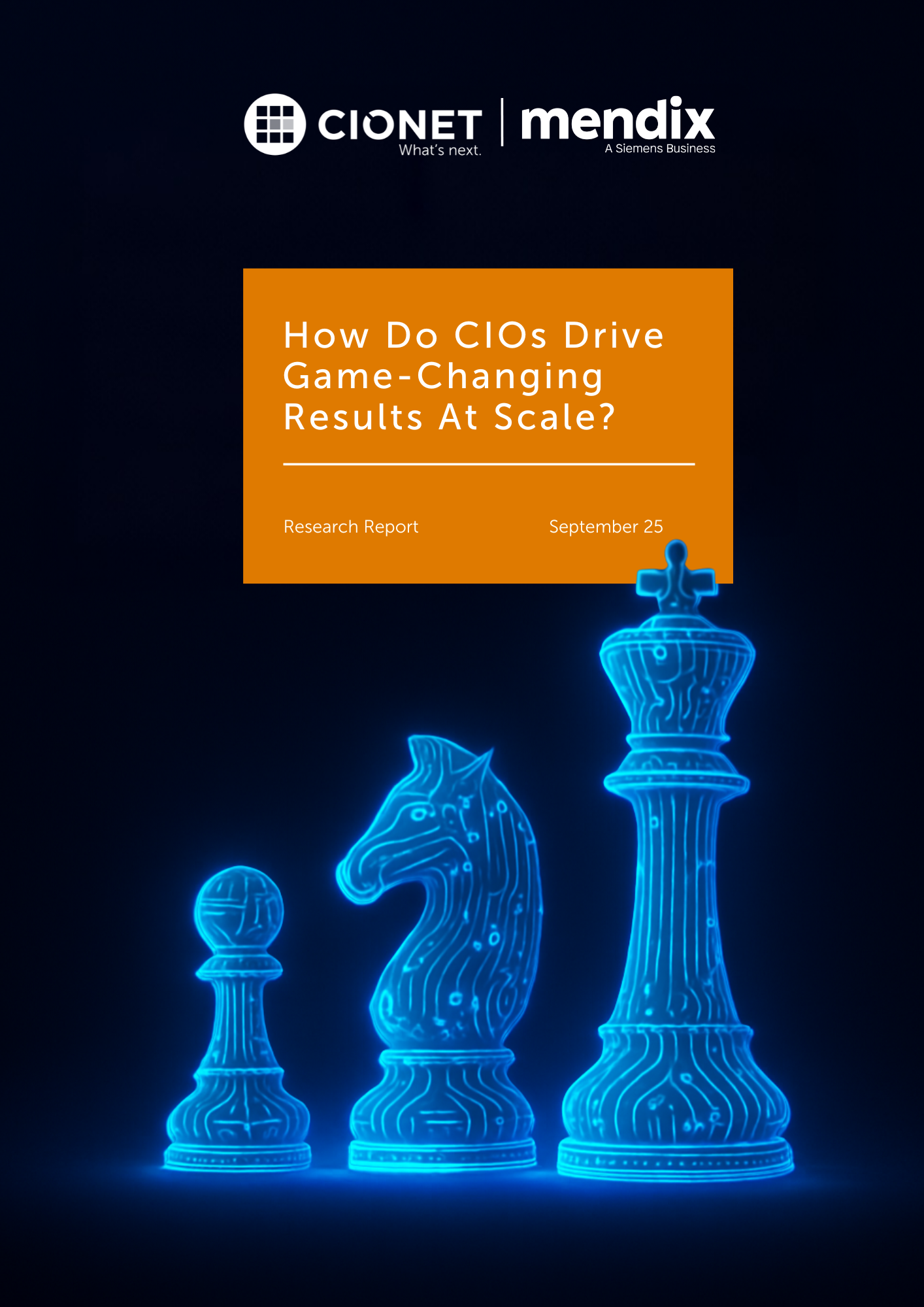
The role of the CIO has evolved from managing systems to shaping outcomes: growth, resilience, and competitive edge are now won or lost in the technology arena. Today ’ s CIOs must balance stability with innovation, control costs while attracting scarce talent, and modernise legacy infrastructure while adopting emerging technologies.
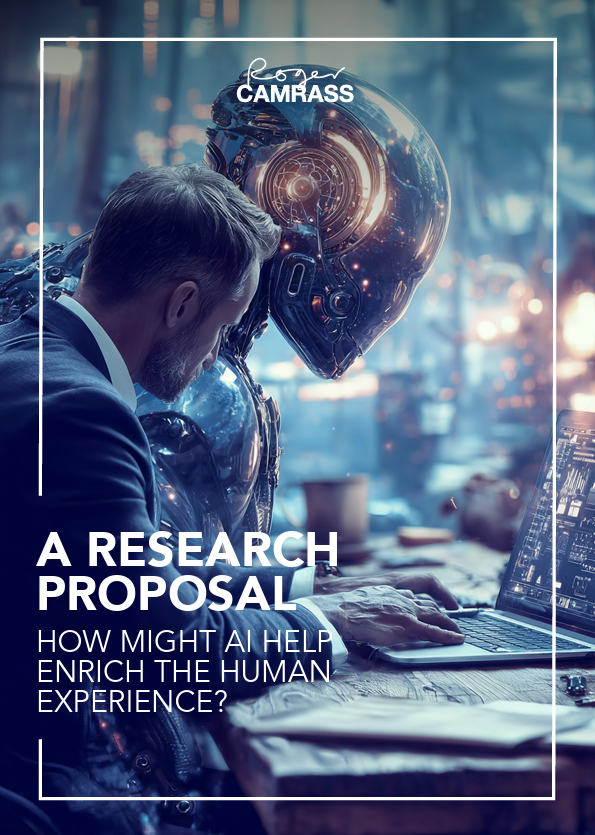
As AI transitions from a specialised tool to an all-pervasive force, understanding its profound implications for our human lives is no longer merely academic but an urgent imperative for social well-being and strategic preparedness.

Geopolitical tensions have dominated the headlines for over two years now. In this context, the cyber threat landscape is also evolving rapidly. The protection and security of critical infrastructure – both physical and digital – is becoming increasingly important.
In our new app, our members connect with other digital leaders from around the world to find better solutions to their challenges.
Connect with digital leaders like you
Share ideas, best practices, and new resources
Experience inspiring and thought-provoking content and conversations you can’t find anywhere else
Make better, more well-informed decisions about the topics that are most important to you
.png?width=600&height=600&name=Anna%20Kopp%20(1).png)
Head of IT Germany and Regional Office Lead Munich, Microsoft

IT Director, IT Thinker

Vice president IT & Compliance, VisionaryRCM (A Carlyle Grp Company)
CIONET’s mission is to help IT executives become more at ease and above all more successful in their jobs. So they can do more than just keep up with change but ultimately define it. CIONET opens up a whole new universe of opportunities in IT management.
With the largest membership of corporate digital leaders across Europe, Latin America, US and Australia, CIONET has the expertise and pioneering vision to solve or address any IT management challenge.
From our local and global events, from our publications and research to our executive education programmes, everything we do is aimed at making sure digital leaders maximise their potential.
with digital leaders who share your interests, who face the same challenges, who care about the same topics.
stories, experiences, and ideas around our shared mission.
from our exclusive events, publications and research.
inspiration, thought-provoking conversations, expert perspectives and exclusive first-hand content each and every day
and make better, more well-informed decisions on how to lead your digital business.
your potential. Realise your ambitions.
You can either send us a registered handwritten letter explaining why you'd like to become a member or you can simply talk to us right here!
Would you like to know more about CIONET, membership or partnership opportunities? Do you have feedback or any other question? Send us a message!